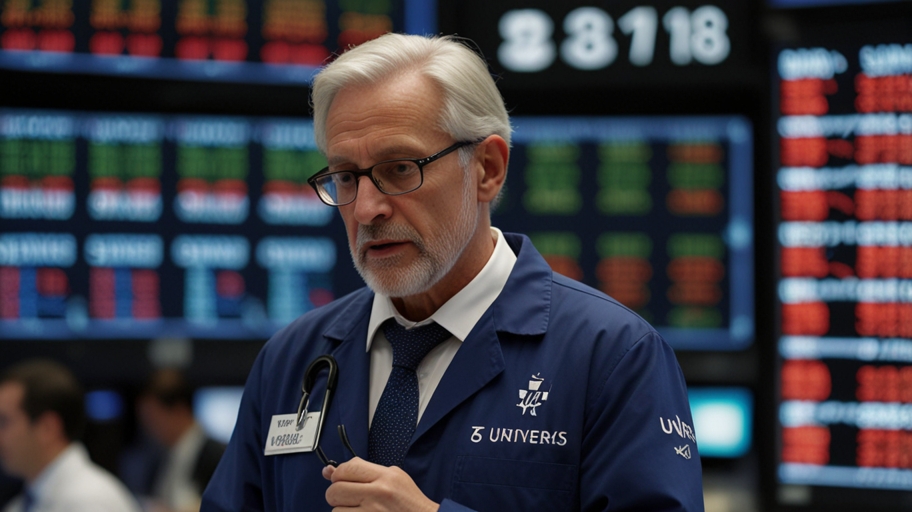On Wednesday, the European markets took a steep dive all in conjunction with the ongoing nervousness among the investors prior to the awaited US trade tariffs declaration planned later in the day.
The pan-European STOXX 600 index slipped by 0.7% in the middle of the morning for the day’s trading. In the meantime, the Germany’s DAX which is particularly responsive to trade swings registered a 1.2% decrease.
In the previous quarters’ results, the healthcare sector was the major gainer, up 2.2%, however, the situation is reversed now, and the sector lost 2.2% which brought the figures down to zero for net gains.
Giants in the pharmaceutical sector were under enormous pressure as a couple of the European companies observed negative trends in the prices of their stocks due to the assumption of US tariffs in the industry.
President Donald Trump has participated in the marking of the April 2 as “Liberation Day,” which is the day his new administration is ready to put down a series of heavy tariffs aiming at the realization of the bright economic future.
The White House, in its communique, reported that the tariffs “will enter into force without delay,” heightening fears in European financial markets.
The specifics of Trump’s tariff plans are mostly out of the public eye, creating a general feeling of anxiety leading to the STOXX 600 ending up at a value the index has not seen in over two months.
The index is now trading approximately 5% less than its record high registered in March, which is a clear indication that the heavier investors’ anxiety is about to become a reality.
According to analysts, markets are worried about the prospect of stagflation, described as a situation where economic output slows down while inflation goes up as a direct consequence of the threatened tariffs. The other big unknown is the type of response from other countries, but the possibility of later retaliatory stages of a trade war seems to be also growing.
It was made clear by the President of the European Commission Ursula von der Leyen that it was not Europe who started this trade conflict but they are ready to respond in case the situation requires it. She stressed that Europe is open to dialogue but will only negotiate from a position of strength supported by trade, technology, and market size advantages.
Marc Ferracci, the French Minister for Industry, has suggested that the measure is fair, and do not provoke conflict with their trading partners in their response to any new tariffs from the United States.
Mr. Ferracci told reporters that the European Union is taking a rational approach and that they now have a few options at hand to avert this worst-case scenario while thinking about the possibility of implementing countermeasures.
The Urgentisimo gentleman by the name of Gianluca Del Fiume, who is the Chairman of Confindustria’s Wholesale Trade Division, has already taken the time to inform us that this is the case.
Specifically, he is shown standing with closed arms, that is, he stops! The entire burden of the US actions is a setback that they fear most believe that lifting the tariffs will resolve.
According to people close to the discussions, the companies manufacturing drugs are really trying to convince the President of the United States to move on implementing the import tax bit by bit.
The tariff policy is to be disclosed at Mr. Trump’s Wednesday address, and its introduction is following a natural course of things, thus leaving the European pharmaceutical companies no other way but to get ready for the business models’ major overhaul.
Rather than the situation becoming potentially difficult for the companies, acting out the imposition of the excise duties over a period of time could help funds remain in the black ever so briefly, simultaneously creating the prospect for the business sector to change their destinations in the United States.
However, some companies are saying that they are still in the middle of dealing with uncertainty which is leading to adverse effects like slowing down the rate of innovation and not investing in time.
Additionally targeting products, there are indications that the EU might take punitive actions in the digital services sector of the U.S. which in turn would have repercussions for the major American technology firms. This escalation could make a new battleground for trade disputes, as the United States is now exporting more services, with European countries as the main destinations.
The repercussions of such a step could touch Meta and Alphabet, the companies that powered the ground-breaking innovation and the stock market over the last year in America. I.e., the European competition authority has flagged a number of U.S tech giants to be among the subjects of antirust investigations, thus the situation is even more complex.
Despite the frictions, the U.S. and EU trade relationship is crucial for both sides. In 2020, the EU was the largest destination for U.S. goods, while the U.S. was the largest destination for European goods, including pharmaceuticals, vehicles, beer, and telecommunications equipment exported.
By far the EU was the most significant destination for U.S. merchandise, comparable to Canada and Mexico combined, and they occupied the highest position in the world’s client list for the European Union.
As the official word from Washington is still awaited, European investors are adrift in unchartered waters. Nevertheless, the next few days will play a role in determining the onset of a prolonged trade conflict or a more cohesive economic relationship between the transatlantic partners.
